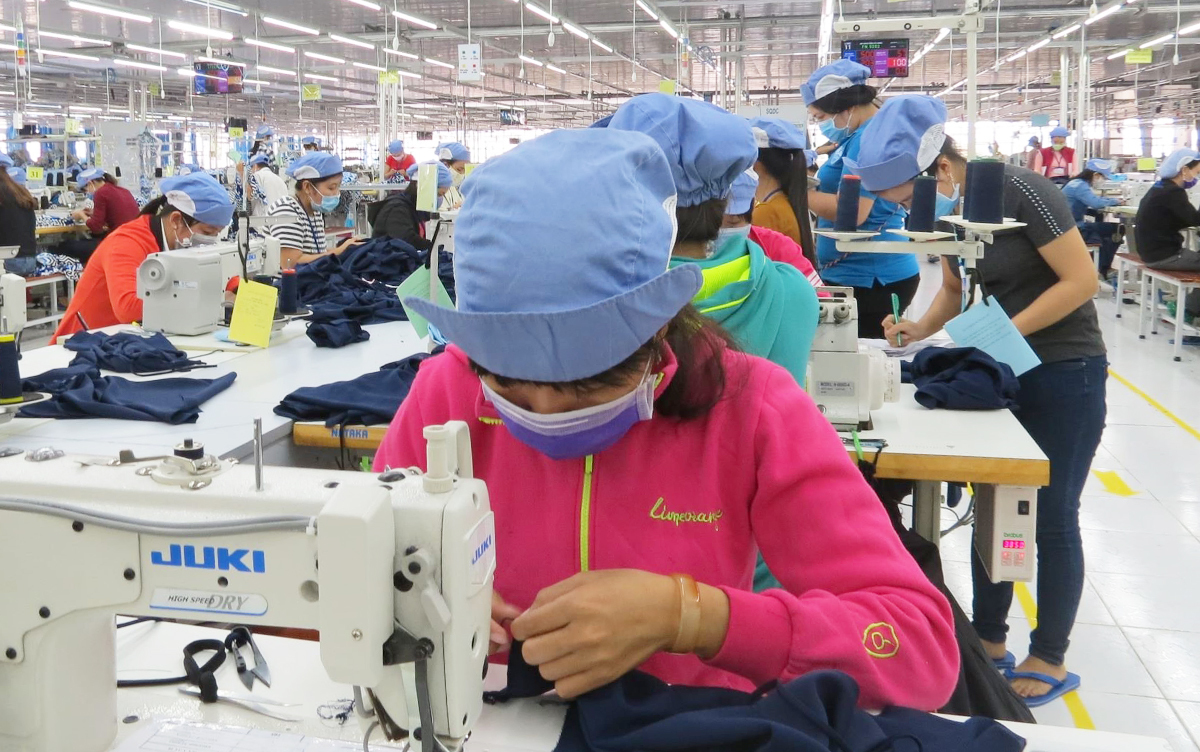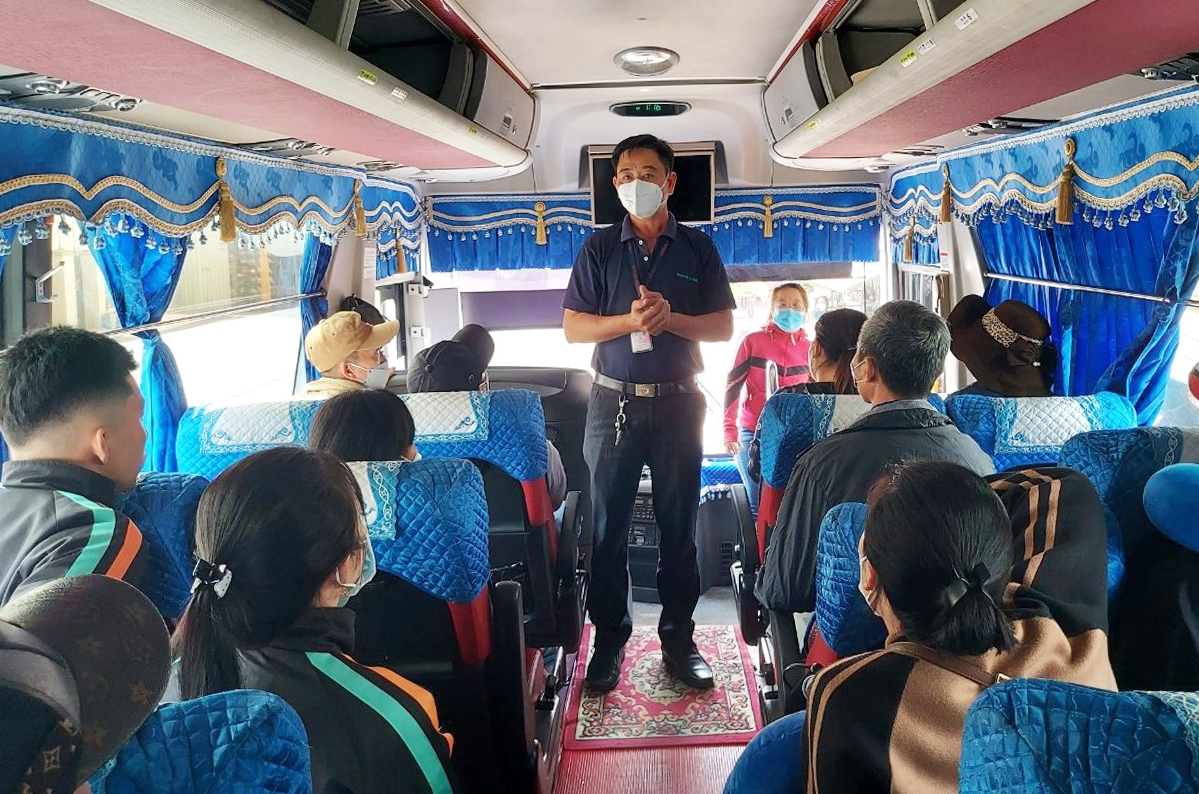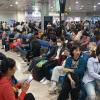The orders are plentiful, but garment and footwear factories in HCMC and surrounding localities are finding hiring difficult as many workers hop jobs to land better offers.
After six years of working for a sewing company in HCMC’s Hoc Mon District, Nguyen Thi Bich Ngoc decided to quit after the Lunar New Year break and find a new job.
The low monthly base salary of less than VND5 million ($219) and the lack of opportunities to work overtime to earn extra income at the factory were the main reasons the 40-year-old woman decided to quit.
“It’s not just me. Many others have done the same thing. Only about half of the workers remain at the factory now,” she said.
 |
|
Nguyen Thi Bich Ngoc (R) has been selling goods online after quiting a sewing company in HCMC. Photo by VnExpress/An Phuong |
When the pandemic resurfaced last year, her factory had to halt production and some workers returned to their hometown, unable to make ends meet in the city and fearful of what would happen if they got infected with the novel coronavirus.
After the Lunar New Year break, as businesses in areas near their native places begin actively recruiting people, many are opting to changing their jobs, leaving their previous employer in need for more workers to complete orders.
Ngoc said she was taking her time to find a new job at a factory with a good salary and good bonus. In the meantime, she sells goods online while receiving unemployment benefits. She said she also intends to apply for a seasonal job at a private garment factory.
Nguyen Thi Thuy, vice president of the Vietnam Textile and Apparel Union, said the ratio of job hoppers was approximately 10 percent of the total number of blue-collar workers, putting more pressure on many factories.
The factories are actively hiring new people to offset the labor shortage as they look to expand production after the Lunar New Year break. For new workers, the factories in the textile and garment sectors are paying an average monthly salary of around VND8 million.
“Many factories have only completed orders for the third quarter last year, so they are on a hiring spree at the moment. There is no limit to the number of people that can be hired. But finding new workers is extremely challenging at the moment,” Thuy said.
Previously, a factory would receive several hundred applications for new jobs every day. Now, this number is limited to a few dozen and sometimes, to less than 10 a day.
In the Vietnamese industrial economy, garment and footwear are the two that require the largest number of workers.
The garment industry employs approximately two million people, accounting for 25 percent of the total processing and manufacturing industry. This figure is more than 1.4 million in the leather industry, accounting for more than 18 percent.
 |
|
Workers during their shift at a garmet factory in the southern Bac Lieu Province. Photo by VnExpress/Le Tuyet |
Common situation
According to Phan Thi Thanh Xuan, vice president of the Vietnam Leather, Footwear and Handbag Association (Lefaso), the lack of labor and recruitment difficulties was a common situation in the industry of more than 2,000 enterprises.
Factories that advertised to hire a few thousand workers could only get a few hundred in the first two-three months. This meant that many factories were struggling to complete their orders in time.
The Fashion Garments Factory in southern Dong Nai Province has been looking to recruit 500 new workers with monthly salaries of more than VND8 million, but it has not been able to meet its hiring target in the last two months.
In addition to connecting with the employment service center, the factory’s human resource staff have traveled directly to the provinces, meeting with many individuals in order to convince them to apply.
Le Thi Phuong, head of the company’s HR department, said the board of directors have decided to spend more than VND1 billion on rewarding new employees. Each employee will receive VND1 million immediately upon signing an official contract, as well as VND6 million in accommodation support. The company will also provide three meals per day for the first three months.
Explaining why it was difficult to recruit new workers despite good benefits, Phuong said that young workers want to work overtime and increase their income. But garment companies are bound to ask employees not to work overtime since they would be fined if they did so. In addition, the Fashion Garments Factory has two weekend days off, so workers were not interested in staying back.
Thuy, with the Vietnam Textile and Apparel Union said there was fierce competition now, not just among textile and garment factories, but also between municipalities and industries.
Workers from the Mekong Delta provinces, for example, used to travel to HCMC to look for job opportunities. Now, they can choose to work at factories in the delta’s Tien Giang and Long An provinces, which have lower living costs while they get similar salaries.
 |
|
A bus carrying workers of footwear maker Samho Vietnam from southern An Giang Province to HCMC. Photo by VnExpress/An Phuong |
Self-employment preference
Though a vast majority have returned to work at factories in HCMC, many of the returning workers prefer to be self-employed, market observers say.
Many young workers are no longer interested in finding blue-collar factory jobs since they can now become motorbike taxi drivers and enjoy more freedom; or pick up jobs in the service sector.
According to Lefaso, in order to attract new workers, many factories are providing accommodation and spending hundreds of billions of dong on rewarding new workers.
However, only businesses with significant financial resources can offer such incentives. Small businesses have “quit the race” not having the money to lure workers after the pandemic.
To cope with the ongoing labor shortages, a number of enterprises have relocated factories out of big cities to other provinces or restructured their production stages over the past few years.
For instance, Phong Phu International JSC, a garment company, employs over 16,000 people, but its factories are spread across the country, spanning from southern Long An Province to northern Tuyen Quang Province. It has also built a sewing center in HCMC to handle just complicated stages. In some stages, robots are being used to reduce labor needs.
- Reduce Hair Loss with PURA D’OR Gold Label Shampoo
- Castor Oil Has Made a “Huge” Difference With Hair and Brow Growth
- Excessive hair loss in men: Signs of illness that cannot be subjective
- Dịch Vụ SEO Website ở Los Angeles, CA: đưa trang web doanh nghiệp bạn lên top Google
- Nails Salon Sierra Madre
 VnExpress News The News Gateway of Vietnam
VnExpress News The News Gateway of Vietnam




